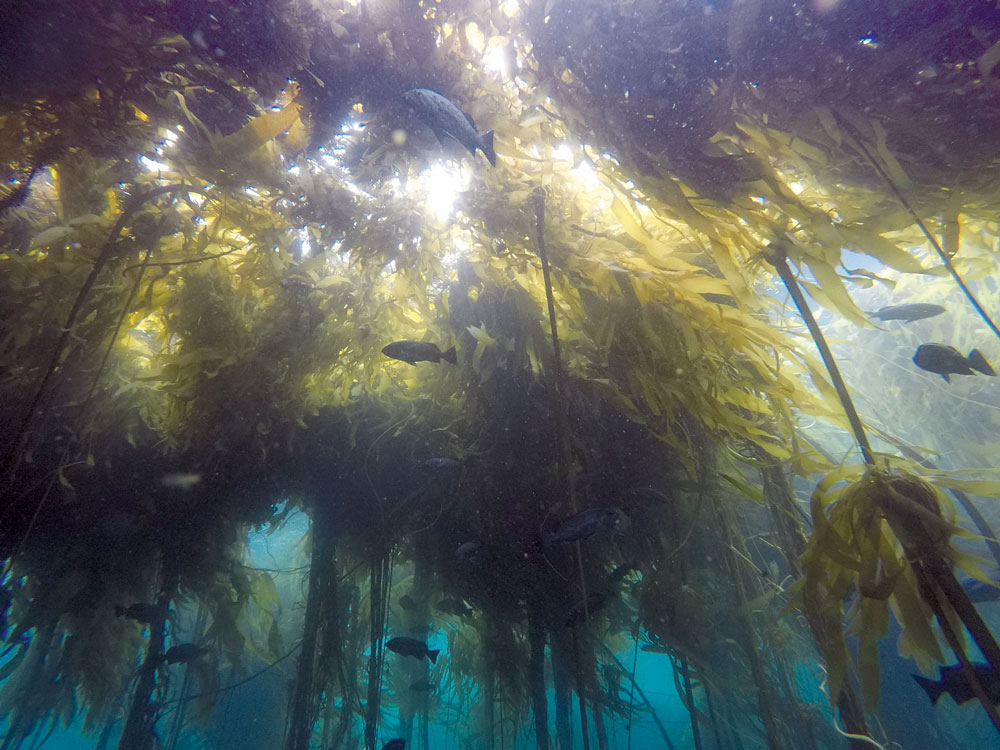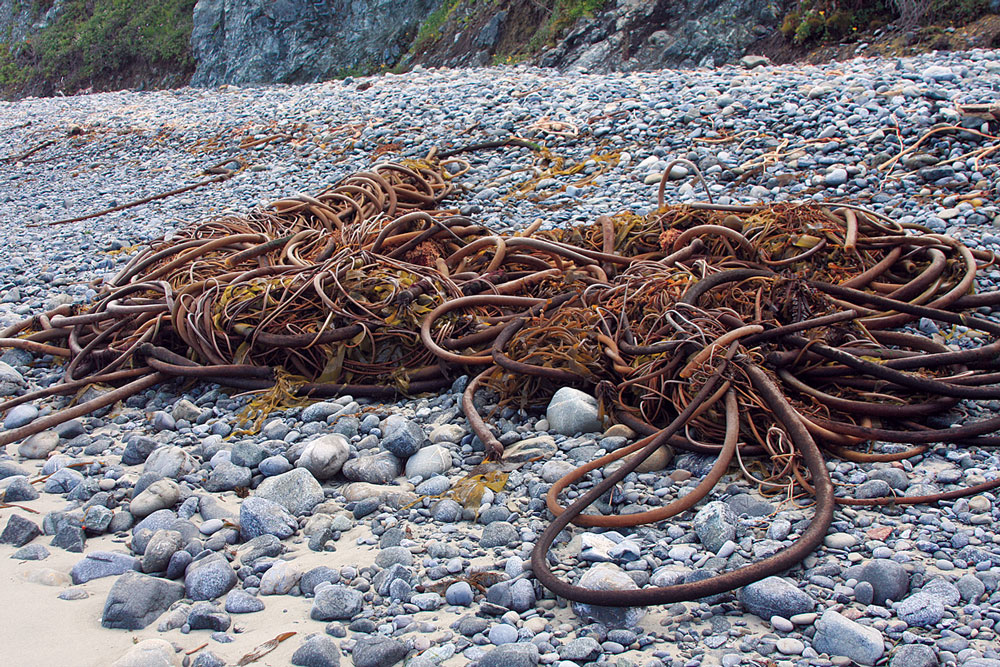Plant Notes
Bull Kelp
Nereocystis luetkeana
It is amazing that something can grow up to 200 feet in one year! Bull kelp is the fastest-growing seaweed in the world and can grow up to two feet per day. This is especially amazing because bull kelp is an annual—germinating, growing, reproducing, and dying all within a year-long cycle. Bull kelp grows in large patches off-shore, forming underwater forests from Monterey to Alaska, preferring colder water than its relative, giant kelp.

Photo by Steve Lonhart / NOAA MBNMS
Germinating from spores in the spring, bull kelp forms holdfasts that look like roots and hold tight to rocks and cobble on the ocean floor. Holdfasts must be strong in order to hold on in the rough-and-tumble subtidal zone. From the holdfast extends the stipe, a hollow stalk with a gas-filled top float that grows all the way up to the surface. At the surface as many as 60 blades grow from the top of the float, absorbing nutrients, sunshine, and carbon dioxide and forming the brown “rafts” of seaweed that we see from the shore or a boat. Spores form in patches on the undersides of the blades, and in fall they release and sink to the sea floor. By winter, bull kelp is spent. Storms wash it to shore where we humans pick it up and twirl it around like a bull whip, hence the common name.

Photo by Steve Lonhart / NOAA MBNMS
On the surface, kelp forests calm the water and provide a resting and feeding area for otters, gulls, herons, shorebirds, and waterbirds. Underwater, kelp forests create shelter and habitat for young fish, snails, crabs, seastars, and many other creatures. Kelp forests dampen the force of waves against the shoreline, helping to reduce beach erosion. Once washed ashore in winter, the decomposing kelp provides food and shelter for scavengers like crabs and beach hoppers, which in turn are food for shorebirds and other beach dwellers.
Bull Kelp Declining
In the past eight years, bull kelp forests in Northern California have declined by about 95%. Exacerbated by climate change, warming oceans affect the upwelling of nutrients and weaken kelp health. In addition, seastar wasting disease became widespread during the warmest years and caused the die-off of the sunflower sea star, which preys on purple sea urchins, which in turn dine on bull kelp. Without this main predator, urchin populations increase and therefore so does kelp consumption, creating barren areas devoid of kelp and most other organisms. Some areas of bull kelp regrowth have recently been observed, a hopeful trend.

